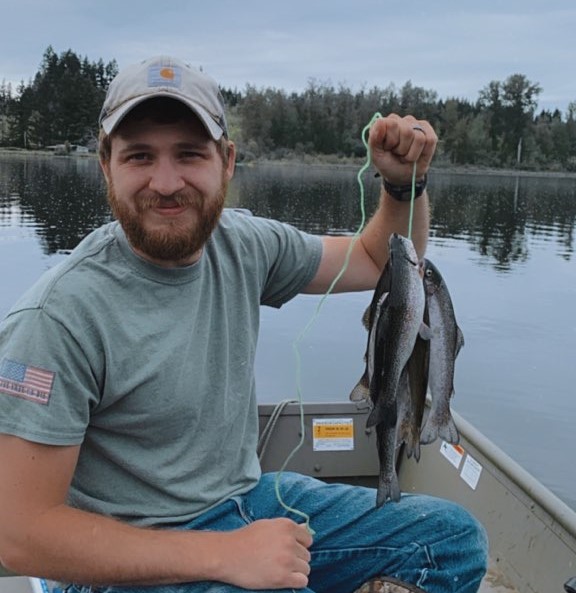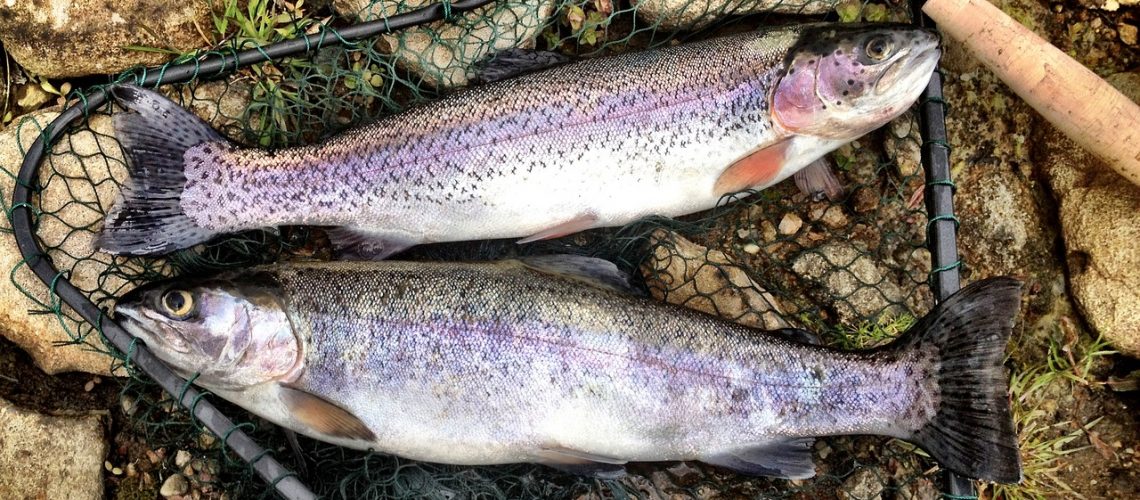Fishing for Rainbow trout is one of my favorite summer pastimes. There is nothing better than having coffee on a Saturday morning in the middle of a good trout lake. I find it very enjoyable to watch nature wake up and start its daily cycle from this unique view point. Let me tell you something though. As much as I love to be out on the lake all day long, Id would rather limit out in hour or two and go have breakfast. Fishing is great, but catching is fantastic. I’d like to share with you some tips and tricks I’ve learned from many long days on the water.
lets talk about rainbow trout
It’s important to know and understand the game fish we are targeting. You will be more successful if you know its habits and where it is likely to be at a given time and temperature. There are millions of Rainbow trout stocked throughout the US every year. Stocked trout make up a huge portion of recreational fresh water fisheries. The fact that they are hard fighting and willing to bite most lures makes them an excellent game fish to stock for recreational fishing. They taste pretty great too.
Rainbow trout have silver sides and bellies, with black spots that extend to their dorsal and tail fins. They have a signature iridescent red stripe down its sides which gave them the name. They average in size between 10 to 20 inches, however it will really depend on food and habitat quality. Their catchable size will also differ greatly as to when they were stocked and what age or size they were stocked at. Although they are fed pellets in the hatcheries they were raised in, they will quickly take to eating the natural food sources. Rainbow trout are a predator fish and will eat almost anything they can catch. This includes mayflies, fish eggs, crawfish, grass hoppers, and other fish up to one third of their length.
Rainbows prefer cold and clean water. It is actually less of a preference and more of a necessity. Colder water holds more oxygen and as the temperature rises it will stress out the fish and can even become lethal. The comfortable water temperature for Rainbows ranges between 44 and 66 degrees Fahrenheit. Optimal seems to be right in the middle hovering around 58 to 60 degrees.
best time to fish
So now that we have established a little background about our target fish. When can one find them? Although they can be caught year-round, spring is the obvious winner. Water temperatures are at the best and it happens to be around the time that millions are stocked across the country. In the heat of the summer the fishing may slow down a bit, but you can still catch them. Fall can a good time as the weather cools back off and there is often a supplemental stocking or two around this time. I have found the early mornings and evenings to be the most productive time of the day.
where are they under all that water?
In cooler weather such as the spring, you will often find them near the surface where the water column is a comfortable temperature. They also may be in more shallow areas near shore where the water is warmer. A fishing thermometer can you help you find a good starting location. In the summer months in the heat of the day they may be found closer to the bottom or even a shady deep cove. If there are any tributaries or streams flowing cool water into the lake that is a great place to try your luck. Rainbows like most other fish like to hang around structures. This can be trees or vegetation that has fallen into the lake or a drop of or under water bank. They will stay within reach but have a need to circle and hunt for food.
tackle and tactics
Trolling. Pick your favorite spinner or spoon, pay out some line and just cruise slowly. The idea is to add action to the lure as it is pulled through the water. This is one of my favorite ways to fish for Rainbow trout. It makes me feel as though my tactics are more aggressive and productive. It can be a good technique to use if you’re the kind of fisherman who is always getting impatient and reeling back in your line early. I will troll mostly in the spring when the trout can be found near the surface. Go nice and slow, I have an app that tells me my speed and I will start at around 1 to 2 mph. You can play with the speed and find what seems to be working. I will generally do a counterclockwise figure 8 once I start getting hits in an area. Sometimes it can be beneficial to speed up or slow down periodically to add some extra action to your rig.
I always set up my trolling rods with a #7 barrel swivel with a clip on the end. I will add a drop shot sinker or two a couple inches above the swivel. I then tie all my favorite lures and spinners to 18 IN leader with a perfection loop on the end ahead of time. This is a great set up because everything is ready and I can easily switch between different lures to find what may be working that day. You can then play with the amount of weight you add to the line and the amount of line that you pay out to get the lure at the depth you desire. If you want to get it down deeper add a sinker or two, or remove some to drift the lure higher.
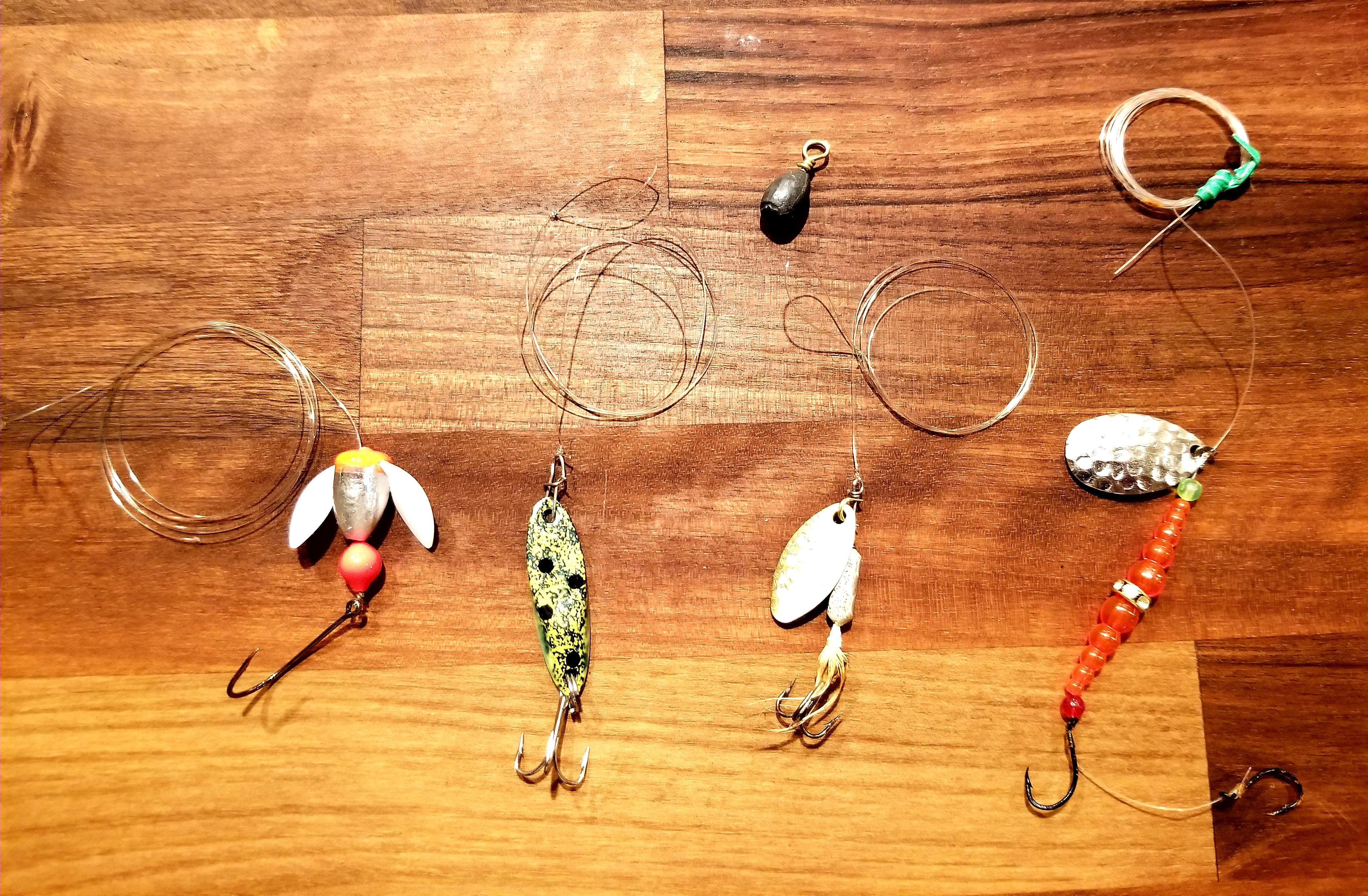
Lure color should be chosen according to water visibility. In dark murky water I would not pick a black lure, but rather a white one. It seems there is usually a color of the day that most fish will bite. One of my favorite rigs is a small spin and glow slid up the leader with a bead between it and a #8 bait hook. I then tip the hook with corn or PowerBait. When fishing from a boat for Rainbow trout you best have a net. They will come out of the water jumping and you will lose quite a few off the hook. Get a net you will be thankful you did.
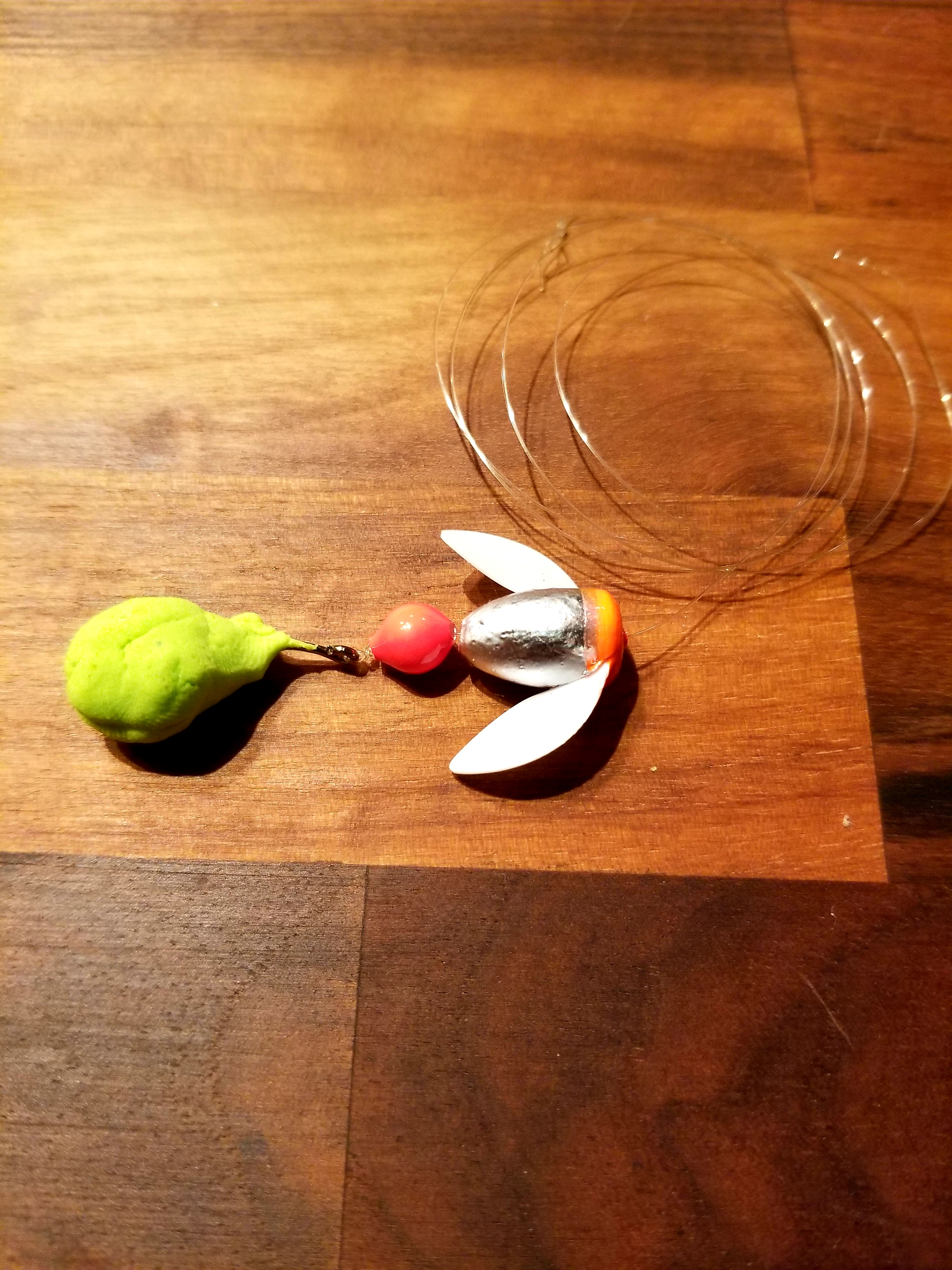
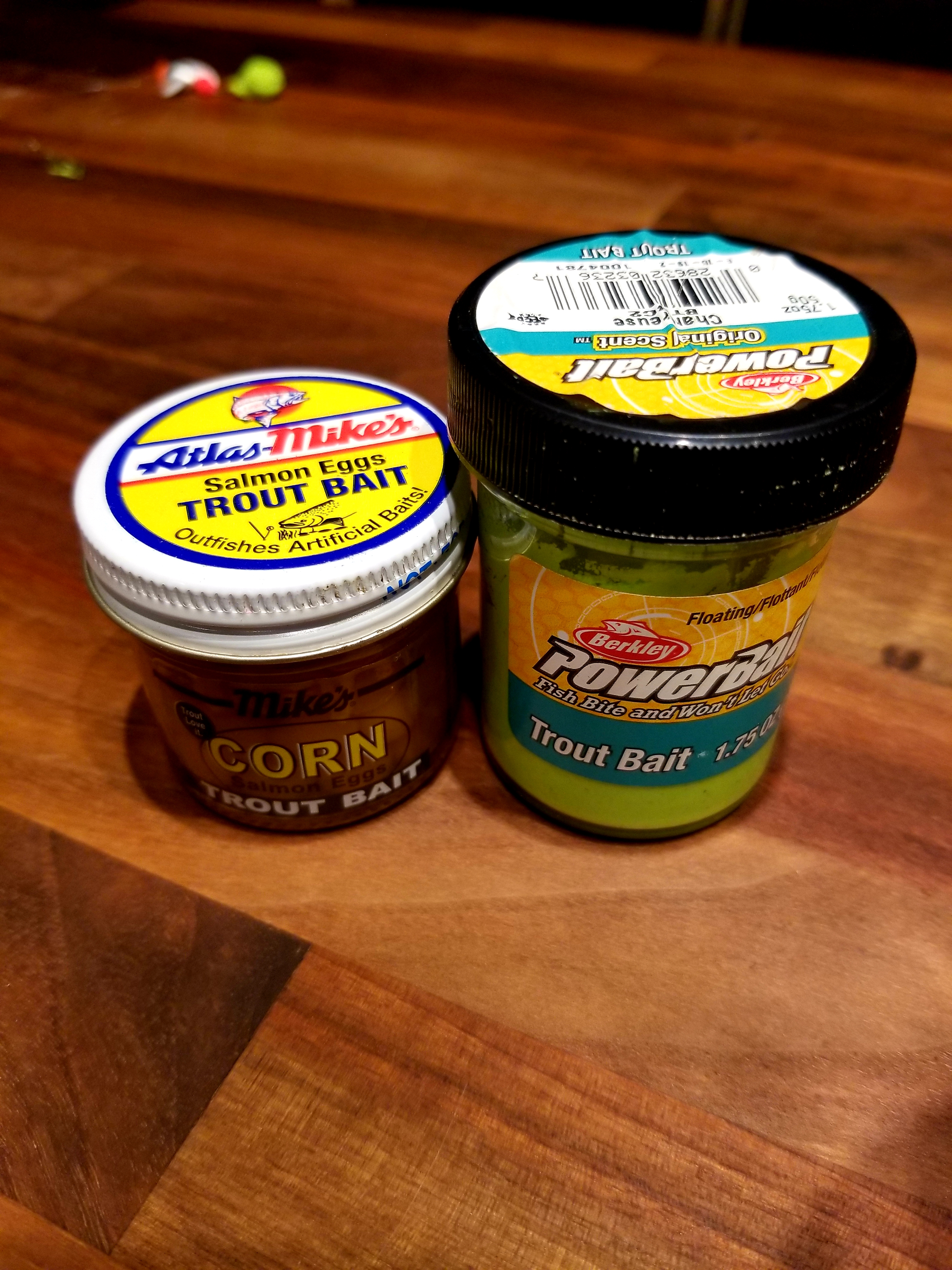
Surface fishing. This is the tried and true bobber with a sinker and an 18 to 24 IN leader. Tie on a # 8 bait hook and try your luck with some worms or salmon eggs. I will sometimes add on a kernel of white shoe peg corn to my crawler set up. I learned that fishing for Kokanee and it seems that Rainbow like the corn as well. This is a great technique for the spring as well when the fish are more likely to be near the surface.
Bottom fishing. When the weather starts to get warmer the fish are going to be deeper near the bottom. You will need to get your setup down deeper to present it to them. The idea here is to float your presentation about 18 in from the bottom. How I like to do this is add a 7 gram bullet weight to my line. I then slide my line through a bead and then back through it again to make a loop that can be loosened to slide the bead up and down the line. I then tie up a #8 bait hook and bait it with PowerBait. You can the adjust the bead to make your leader longer or shorter. Whatever you choose to use for bait must be floated. If what you have does not float adding marshmallows will get your rig off the bottom. Color is important here as well. I always go for the fluorescent colors with added glitter. One of my favorites is the PowerBait green with added glitter and a garlic scent.

Your time out on the lake will be much more enjoyable if you can remember where the fish are likely to be in that weather period. Use your knowledge of the fish to make more precise decisions about where to focus your efforts. Once you find them, play with different rig setups until you find what is working that day. Then all you have left to do is fill up the cooler with your daily limit.
